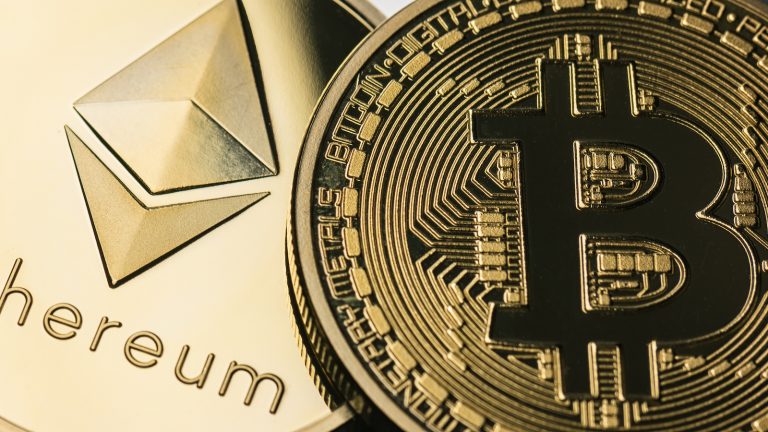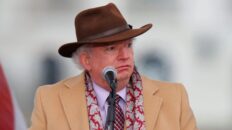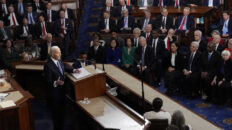If you read on the topic of money’s history from any mainstream textbook, you will already know the drill. In the past, money took many forms. It was shells, pelts, salt, and various metals. Finally we got paper money, credit institutions, then central banks. At this point, we are told, history was complete. The final and best form had arrived.
The state would be in charge of money forever. All that was left was to have it managed in a way that better served our needs. People argued about systems of government management. Maybe a rule of some sort, based on quantity or the gold price or some other scheme. The system can be reformed, but the idea of treating money as a technology to be managed by the market – well, let’s just leave that to utopians like F.A. Hayek.
Frozen in Place
The nationalization of money froze it in place. But look what actually happened. From the time when money came to be nationalized by the state and managed by central banks, roughly 100 years ago, the improvements stopped. Everything else got better: cars, flight, communication, homes, indoor environments, distribution of all essentials from food to clothing to finance. What did not improve was the money itself. In fact, it became worse.
This is for a reason. The nationalization of money froze it in place. It was no longer subject to the pressure that free enterprise places on everything else. It was the great exception (there were other exceptions too, like schools and courts). It was stuck. In the 21st century, we were using the same core money technology as we were using in the early part of the 20th century. Hardly anyone thought anything of it. Surely we had come to the end of history.
The consequences were not only that money never got better. The nationalization of money led to a huge increase in government debt, wild swings in credit cycles, inflation, and even war because government no longer had to tax people for funds but rather could print it without limit. All of this ended up eating away at liberty itself, growing government beyond what any liberal society should tolerate, and fed human rights abuses.
Then Came Crypto
From the time that Bitcoin became viable, however, monetary theory would never be the same. In the years since that time (2009), I’ve noticed a gradual change taking place. We used to think about money as somehow existing in a finalized form. No more. It is now being thought of as we should have thought about it all along, as a technology that can become better in response to human needs.
In the 19th century, the word technology was not in common use. Instead a different phrase was popular: the practical arts. I think it is better. Inventing new things for human use is an art form. But it is not art just for admiring. It is art for using, art to make life better, a tool to enable a better path forward for all.
The practical arts today involve new apps, new buying options, new ways to communicate, new modes of transportation, and new markets. They make things cheaper, better, and more adaptive to our needs. Entrepreneurs compete to find better ways of serving us through the practical arts.
When will mainstream monetary theory adapt to the new reality? Check back in ten years.
Thanks to the rise of cryptocurrency, the practical arts are being applied to reinventing money itself. It is going on every day, with thousands of companies innovating new monetary technologies. The big breakthroughs include: the uniting of money with payment systems, the dramatic diminution of counterparty risk, the inclusion of the unbanked, the impossibility of censorship, the security of ownership, the absence of a central point of failure. We keep discovering new virtues.
Cryptocurrency opened up the floodgates of monetary innovation a century after the enterprise had been shut down. F.A. Hayek wrote, “I have no doubt that competition would be much more inventive in providing the kind of monetary institutions needed for the proper functioning of markets.” He thought this might only happen by eliminating legal tender laws and dismantling central banks.
Perhaps the most remarkable thing about cryptocurrency is that it unleashed competition without any reform of the system that still operates from the top down. No law was repealed, no plan was enacted, no new reforms were passed. It was as if a Maserati had sudden driven up alongside a fleet of Model Ts.
When will mainstream monetary theory adapt to the new reality? Check back in ten years.
When I was in Tel Aviv, Israel, recently, I did a full interview on a popular podcast on this topic and its meaning for our future.
This article originally appeared on FEE.














The virtues of cryto currencies is that they decentralized. The vices are that the third world does not have smart phones or internet access in most places, and digital allows a fingerprint of transactions and ownership. In addition, anything that is digital can if not today, then tomorrow will be hacked. I can only imagine the hackers laughing at blockchain algorithms we believe today are invincible. Can gains be made with crypto currencies. Absolutely! We must keep in mind that is called crypto currency, not crypto money. Money is gold and silver. It is a fact that those in the financial realm refuse to acknowledge. I enjoy both currency and money but they are not the same. Currency is a derivative of money, even if money is not used for day to day transactions. I travel the world and I am not aware of any currency that has the word money on it, there may be one out there but I am not aware of it.
In the U.S. we have the 1792 Coinage act which provides the definition of dollar which has never been repealed and coincides with Article 1 Sec. 10 of the Constitution. I do find it ironic that in any country that I travel they call their currency money but would not dare to call another countries medium of exchange money but rather currency. Yet when asking the Currency Exchange booth at the airport or the citizens of any said nation they are surprised that when I inquire why does your currency not state money and yet your central bank, if it’s not a third world country, holds money (gold), but doesn’t allow it to circulate in the banks for citizens to acquire/save/and use. These are priceless nonverbals you should ask if you travel abroad :). It’s what I would call that duh moment . . .
@sofee Interesting point on being decentralized and yet they all come together (centralized) on the blockchain…